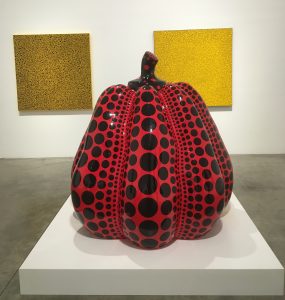I went and saw Suspiria at 9:45 in the morning at an empty movie theatre on a cold, sunless Friday, which proved to be optimal viewing conditions for the film. Luckily three more people (all of them on their own, like me) trickled into the theatre by the time the movie started so I wasn’t completely alone while being terrorized for the next two and a half hours.
Suspiria is about a lot of things. Small town girl comes to divided Berlin to join a modern dance troupe led by sinister, bloody witches. The original, whose plot it loosely follows, is more concerned with keeping an electric tone and gonzo style, while this homage, directed by Luca Guadagnino, feels more concerned with where and how those elements fit in the world today, or if they fit at all. It’s not a horror film in the traditional sense, where gray and dread harbor thrilling menace, instead, it’s a quieter, growing sense of permanent doom. The classic thrills are there, but they’re less high voltage and more so a worsening, neverending mania.
It gives you a lot to chew on—and any moment of reflection is sharply interrupted by a new horrific turn of the plot, leaving you permanently unsettled. It made me think about ritual and rebirth; reinvention and how it, for all its bloody tax and strain, can sometimes be a setback rather than a step forward. Madame Le Blanc, played by Tilda Swinton, is expertly precise and a commander of the occult for nearly the entire film, until a single lingering doubt brings about her demise. No one can be so completely sure of their self, we’re told.
After the movie, I wandered around London, which looks like the actual end of the world in November, and ended up at the Victoria Miro gallery in Shoreditch. I went inside and stumbled into a Yayoi Kusama exhibit—which, the more I think about it, the more I realize I think I accidentally snuck into? Checking the gallery’s website now I see that they were issuing timed entry tickets, which I definitely did not have, and I kind of ended up entering the building via a backdoor because I couldn’t figure out where the front door was?
Anyway, that’s besides the point. The point is that I had unwittingly wandered into a veritable Instagram hive. I saw the dot paintings and saw the pumpkins and thought the same “I could have made that” thoughts that everyone else thinks while looking at them and tried to break past that into the greater messaging Kusama’s trying to say about proliferation, narcissism, and commerce and whether she’s tearing them down or merely perpetuating them—but I couldn’t.
 Suddenly these giant pumpkins were monoliths of dread—something I wanted to shun out of defiance, but knew I wouldn’t be able to get away from or justify my own theory against them. I felt like Susie in Suspria—in over my head against a powerful authority figure, but also completely absorbed by it.
Suddenly these giant pumpkins were monoliths of dread—something I wanted to shun out of defiance, but knew I wouldn’t be able to get away from or justify my own theory against them. I felt like Susie in Suspria—in over my head against a powerful authority figure, but also completely absorbed by it.
I went to the exit (which was actually the entrance because I had done the whole show in reverse!) but not before I made one last stop at one of Kusama’s signature infinity rooms they had jerry-rigged (and I mean jerry-rigged) upstairs in an attic space above the main floor.
This was the pièce de résistance of the exhibit and of my own personal experience with the show, even though I never actually went in the infinity room. I went up the creaky stairs to the dim attic and was met with a line of about a hundred people—most of them around my age, the Shoreditch-set, slightly vampiric in energy—and I turned right back around. On my way out of the gallery I bumped into a mildly D-list YouTube celebrity and the mark the whole experience had made on my was solidified. Like a polka dot.